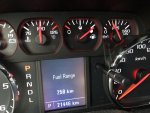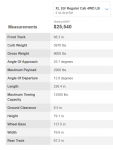ChasingOurTrunks
Well-known member
The 4 Runner is not a bad option if you shy away from LC/Patrol/Montero (which I can understand). I had one as a second vehicle in the Congo, and it was not bad, although I recall that it was the only one in the country (at least that I saw) which implies less familiarity if you have to get help from a mechanic, and less availability of spares. Lots of people underestimate the spares issue. If your windscreen (windshield) is smashed by a passing truck's throwing up a stone, getting a new one will be difficult to impossible if the vehicle/model is not sold locally. It gets boring driving a month or two with saran wrap and duck tape...
Lots of wisdom there - the 4Runner is great in North America but it’s not a global platform. But, it does have availability in parts of South America — how popular it is I have no idea.
If you do your own maintenance AND repair, and take key spares with you (more weight and space) then Land Rovers aren't bad. I recall a conversation with a local cop who had just been issued with a LR3 in which he said that it wasn't bad except for the wooden brakes (!). I recall a friend in Botswana for whom replacing rear hub bearings was almost as frequent as filling with fuel; and we have friends with whom we travelled, somewht informally, in Tanzania, whose LR was in need of repair on a weekly basis. When I first travelled in Africa LRs were 80% of the 4x4s you'd see in the bush, now they're 10%. There's a good reason for that. Personally I wouldn't consider a LR in any circumstances.
That’s been my impression as well, but a different conclusion - I would definitely consider a Land Rover in the lower 48 (OP’s location and primary travel space) where a person is only ever 150 miles from the nearest MacDonalds, and there is 100% reliable satellite coverage for a SPOT and about 80% reliable cell coverage. That’s not true elsewhere, but in the lower 48 if one does have an incident there are options for help. In the bush in Northern Canada though (where most of my travel takes place) or in Africa, I would be much more cautious for the reasons you quite rightly stated. And the caveat you have identified is spot on — I enjoy turning wrenches and tend to personify my vehicles to the point where maintainience on a rig gives me the same satisfaction as walking my dog — I feel it’s “good” for them, and I feel good having done it. As I said in my other post, I’m hopeful in my heart-of-hearts that JLR reliability turns a corner with the new Defender — that one is high on the list for my next rig, if they have delivered on their promise. Time will tell.
And besides — this is a forum about adventure travel by vehicle, and “Adventure begins when things go wrong” so from a certain point of view the BEST choice is a ratty, broken down old LR — Think of the stories you can tell when (if?) you eventually make it home!




